Dear Reporters:
I’m Lisa Saunders, a former licensed child care provider who was unaware of my occupational risk for contracting cytomegalovirus (CMV) until after my daughter was born with a severely damaged brain from congenital CMV.
If you believe it is a woman's right to know how to protect her unborn child from birth defects, then please read my following letter about the "inconvenient truth" about cytomegalovirus (CMV), the leading viral cause of birth defects (more common than Zika). I believe it will take serious investigative reporting to raise long-term awareness and make protocol changes in child care and prenatal care in regard to providing CMV prevention education. I know many mothers, child care providers and doctors who are willing to be quoted by the media.
If you won an award for investigative journalism, that would raise awareness even more: https://gijn.org/investigative-journalism-awards/
If you won an award for investigative journalism, that would raise awareness even more: https://gijn.org/investigative-journalism-awards/
According to the Centers for Disease Control and Prevention (CDC), “About one out of every 200 babies is born with congenital CMV infection...about one in five babies with congenital CMV infection will be sick from the virus or have long-term health problems...A pregnant woman can pass CMV to her unborn baby…This can happen when a pregnant woman is infected with CMV for the first time, or is infected with CMV again during pregnancy.” Every year, congenital CMV (cCMV) causes disability in an estimated 4,000 babies in the U.S. (4 million annual births/200 born with cCMV/5 sick or long-term health problems = 4,000 disabled by cCMV).
CMV is often spread by toddlers--especially those in a group care setting--to each other, their child care providers and families. Mothers of young children in group care are also at increased risk for contracting CMV (Pass et al., 1986) and are unaware of this. Sixty one percent “of children under the age of 5 are cared for in a child care facility” (Thackeray and Magnusson, 2016).
I have embedded links in this email to direct you to my sources.
If I was a reporter, I would want to know why women are not being told how to reduce their chances of contracting CMV. What's most shocking to me is that:
1) OB/GYNs are now discouraged from discussing CMV prevention with their patients. The New York Times touched on this in their article, CMV Is a Greater Threat to Infants Than Zika, but Far Less Often Discussed (Saint Louis, 2016): "The American College of Obstetricians and Gynecologists [ACOG] used to encourage counseling for pregnant women on how to avoid CMV. But last year, the college reversed course, saying, 'Patient instruction remains unproven as a method to reduce the risk of congenital CMV infection.'" The article features comments by Dr. Demmler-Harrison who "said she was 'livid' about ACOG’s decision. 'I am baffled why obstetricians do not feel it is important or even worthy to educate pregnant women about CMV,' she said. 'It’s a missed opportunity to save a baby from the devastating effects of CMV, including death in the womb and permanent disabilities.' A study in a French hospital found five to 10 minutes of counseling about CMV prevention resulted in fewer women contracting the virus. In another study, pregnant mothers shown a video and offered hygiene tips were much less likely to get CMV (5.9 percent) than those not given information on prevention (41.7 percent)."
2) In most states (with the exception of Utah and recently, Idaho), child care centers are not required by law to ensure workers know their occupational risk for CMV despite the fact that in the U.S., workers have the right to “receive information and training about hazards” (Occupational Safety and Health Act of 1970). "Up to 70% of children ages 1 to 3 years in group care settings excrete the virus...With regard to child-to-staff transmission, studies have shown increased rates of infection with CMV in caregivers/teachers ranging from 8% to 20%” (Caring for Our Children, American Academy of Pediatrics, et al, revised 2017). There are 562,420 child care workers in the U.S.(Dept. of Labor, 2017). Find your state's child care licensing programs: http://childcareaware.org/resources/map/
From the CDC--You May Be Able to Reduce Your Risk for CMV: “The saliva and urine of children with CMV have high amounts of the virus. You can avoid getting a child’s saliva in your mouth by, for example, not sharing food, utensils, or cups with a child. Also, you should wash your hands after changing diapers. These cannot eliminate your risk of getting CMV, but may lessen the chances of getting it” ("Congenital CMV Facts for Pregnant Women and Parents" flyer at: cdc.gov/cmv).
2) In most states (with the exception of Utah and recently, Idaho), child care centers are not required by law to ensure workers know their occupational risk for CMV despite the fact that in the U.S., workers have the right to “receive information and training about hazards” (Occupational Safety and Health Act of 1970). "Up to 70% of children ages 1 to 3 years in group care settings excrete the virus...With regard to child-to-staff transmission, studies have shown increased rates of infection with CMV in caregivers/teachers ranging from 8% to 20%” (Caring for Our Children, American Academy of Pediatrics, et al, revised 2017). There are 562,420 child care workers in the U.S.(Dept. of Labor, 2017). Find your state's child care licensing programs: http://childcareaware.org/resources/map/
From the CDC--You May Be Able to Reduce Your Risk for CMV: “The saliva and urine of children with CMV have high amounts of the virus. You can avoid getting a child’s saliva in your mouth by, for example, not sharing food, utensils, or cups with a child. Also, you should wash your hands after changing diapers. These cannot eliminate your risk of getting CMV, but may lessen the chances of getting it” ("Congenital CMV Facts for Pregnant Women and Parents" flyer at: cdc.gov/cmv).
My story with CMV: I’m a former "in-home" licensed child care provider who was trained in CPR, etc., yet was not educated about my occupational risk for CMV until after my daughter Elizabeth was born severally disabled by congenital CMV in 1989. At the time of her birth, I was the mother of a toddler, was operating a daycare center for toddlers in my home, and was volunteering in our church nursery--all things that put my pregnancy at risk for CMV. Elizabeth had an abnormally small, damaged brain (microcephaly), was profoundly mentally and visually impaired, and had cerebral palsy. After her birth, I was given information from the CDC informing me that people who care for or work closely with young children may be at greater risk of CMV infection than other people because CMV infection is common among young children. This information came too late to spare my daughter the years of suffering that lay ahead of her. As Elizabeth aged, in addition to her disabilities requiring major surgeries such as spinal fusion, she began to lose her hearing and developed epilepsy.She died at 16 during a seizure in 2006 while we were living in New York. Shortly after moving to Connecticut in 2010, I received a call from a local grandmother who said her grandson was just born disabled by congenital CMV. The baby's mother had been a high school student interning at a Connecticut day care center while pregnant. She, too, had not been educated about CMV and how to protect her pregnancy. When I visited the mother and baby in the hospital, the attending nurse asked me why more wasn’t being done to raise awareness of this leading viral cause of birth defects. Although I wrote a book about Elizabeth’s life with CMV, “Anything But a Dog: the perfect pet for a girl with congenital CMV” (Unlimited Publishing, 2008, Japanese version, 2017) congenital CMV still remains largely unknown.
Surveys show that most women have never heard of CMV (Doutre et al, 2016)—including child care providers (Thackeray and Magnusson, 2016).
According to Caring for Our Children (AAP, et al.): "Female employees of childbearing age should be referred to their primary health care provider or to the health department authority for counseling about their risk of CMV infection. This counseling may include testing for serum antibodies to CMV to determine the employee’s immunity against CMV infection…it is also important for the child care center director to inform infant caregivers/teachers of the increased risk of exposure to CMV during pregnancy” (content in STANDARD modified 3/31/17, Visit: nrckids.org/CFOC/
Congenital CMV remains little-known in the U.S. for several reasons:
— CMV prevention education is not part of a doctor’s “standard practice of care.” The following reasons have been cited for this lack of prevention education:
1. Don’t want to frighten their patients: An OB/GYN quoted in FitPregnancy magazine (
2. …most CMV infections go undiagnosed—“The virtual absence of a prevention message has been due, in part, to the low profile of congenital CMV. Infection is usually asymptomatic in both mother and infant, and when symptoms do occur, they are non-specific, so most CMV infections go undiagnosed.” (Article, “Washing our hands of the congenital cytomegalovirus disease epidemic,”by Cannon MJ, Davis KF, published in BMC Public Health 2005, 5:70).
3. Feel prevention measures are “impractical or burdensome." According to the New York Times, “Guidelines from ACOG suggest that pregnant women will find CMV prevention ‘impractical and burdensome,’ especially if they are told not to kiss their toddlers on the mouth — a possible route of transmission.”
4. Concerns about effectiveness of CMV prevention instructions. “…because of concerns about effectiveness (i.e., Will women consistently follow hygienic practices as the result of interventions?), the medical and public health communities appear reluctant to embrace primary CMV prevention via improved hygienic practices, and educational interventions are rare,” state Drs. Cannon and Davis in “Washing our hands of the congenital cytomegalovirus disease epidemic.”
— Still no national public awareness campaign: “Despite being the leading cause of mental retardation and disability in children, there are currently no national public awareness campaigns to educate expecting mothers about congenital CMV,” states Clinical Advisor article, “Educate pregnant women to prevent congenital CMV.” (2014)
— No central U.S. daycare center licensing procedures to enforce daycare licensing education and methods of CMV control. According to the Department of Labor, "Education and training requirements vary by setting, state, and employer."
Examples of CMV Protocols in Other Countries:
In Queensland, Australia, suggested control measures include: "relocating workers who are pregnant, or who expect to become pregnant, to care for children aged over two to reduce contact with urine and saliva" (Queensland Government).
In Germany, to protect day care workers from primary CMV infection, their “CMV serostatus must be checked at the beginning of their pregnancy.” If the worker “is seronegative, she is excluded from professional activities with children under the age of three years” (Stranzinger et al., 2016).
The following are articles and TV interviews about my CMV work since moving to Connecticut in 2010. Some include interviews with Dr. Brenda Balch, who, along with me, was instrumental in getting a CMV law passed in Connecticut.
- News 8: Mystic mother raises awareness of CMV, a risk for pregnant women and their babies (Sarah Cody, June 13, 2018)
- Sarah Cody, News Reporter, Facebook CMV Prevention video (June 2018)
- Connecticut Magazine: Mystic Mom 'Overwhelmed' by Governor Signing Law on ‘Stealth Virus’ That Can Catch Pregnant Women Unaware (2015)
- Cornell Alumni Magazine: In Memory of Elizabeth: Her daughter's death from a preventable disability spurs Lisa Avazian Saunders '82 into action (2015)
- Clinical Advisor magazine: “Connecticut passes
cytomegalovirus screening law for newborns” (2015) - News 8 Medical/Health Report: "Mystic mom raising awareness about potentially deadly virus" (2015)
- News 8: Preventing Congenital CMV During Pregnancy (2015)
- Fox CT, Hartford Courant: Mother Working to Protect Pregnant Moms From Dangerous Virus (2014)
- Mystic River Press: Saunders seeks help with CMV ‘silent virus’ prevention bill (2014)
- Grace Magazine (The Day): "Loss and love: Author raises awareness about preventable birth defect" (2013)
Please let me know if you need more information or for me to present this information in any other way.
Thanks!
Lisa Saunders
Child Care Providers Education Committee
Author: AuthorLisaSaunders.com
PO Box 389, Mystic, CT 06355
lisa.saunders@nationalcmv.org
CMV experts I collaborate with include:
U.S.
Gail J. Demmler-Harrison, MD, Director, Congenital CMV Disease Research, Clinic & Registry, Houston, Texas. Email: cmv@bcm.edu. She was instrumental in helping Texas pass a CMV education law. Gail J Demmler-Harrison, MD, Professor, Pediatrics, Section Infectious Diseases, Baylor College of Medicine, Attending Physician, Infectious Diseases Service, Texas Children's Hospital, CMV Registry, CMV Research and CMV Clinic. The CMV Registry supports CMV research, disseminates information and provides parent support. Visit: https://www.bcm.edu/
**
Laura Gibson, M.D., Associate Professor, Infectious Diseases and Immunology
Chief, Division of Medicine-Pediatrics, Departments of Medicine and Pediatrics
University of Massachusetts Medical School
55 Lake Avenue North, room S7-715, Worcester, MA 01655, Tel: 508-856-3158
Email: laura.gibson@umassmed.eduBrenda Balch, MD, American Academy of Pediatrics (AAP) Early Hearing Detection & Intervention Connecticut Chapter Champion. Contact:childcare@nationalcmv.org . She was instrumental in helping Connecticut be the second state to pass a CMV testing law for infants who fail their newborn hearing test. Prevention education did not pass, but she helped the CT Dept. of Public Health (DPH) put CMV information on its website, collaborated with the National CMV Foundation to put CT's DPH logo on one of their existing flyers, and created other materials to provide CMV education. See: https://portal.ct.gov/DPH/
- Connecticut Resources: NEW - About Cytomegalovirus (CMV) FOR OBSTETRIC HEALTH CARE PROVIDERS; NEW - About Cytomegalovirus (CMV) TESTING FOR
Stuart Adler, M.D., Professor Emeritus of Pediatrics and Professor of Microbiology and Immunology, Virginia Commonwealth University. He organized the National CMV Registry for Pregnant
Women. In 2018 he stated, 'Women at highest risk are those caring daily for children less than 24 months of age. These women, should they become pregnant, should either request to care for children over age 2 years for the duration of pregnancy or be tested for IgG antibodies to CMV. If they lack antibodies to CMV (immunity) they should care for children over age 2 years for the duration of pregnancy. If this is not possible they should carefully follow hygienic precautions and be retested for CMV monthly for the first 5 months of pregnancy,“ states Stuart P. Adler M.D, Director, CMV Research Foundation.
Dr. Adler testified in favor if the CT CMV bill: Adler, Stuart, MD, Emeritus Professor of Pediatrics and Chairman, Division of Infectious Disease. (2014, Feb. 28). Public Hearing Testimony, Raised H.B. No. 5147 . Retrieved from Connecticut General Assembly: http://www.cga.ct.gov/2014/PHdata/Tmy/2014HB-05147-R000228-Stuart%20Adler,%20Emeritus%20Professor%20of%20Pediatrics%20and%20Chairman,%20Division%20of%20Infectious%20Disease-TMY.PDF
Dr. Adler testified in favor if the CT CMV bill: Adler, Stuart, MD, Emeritus Professor of Pediatrics and Chairman, Division of Infectious Disease. (2014, Feb. 28). Public Hearing Testimony, Raised H.B. No. 5147 . Retrieved from Connecticut General Assembly: http://www.cga.ct.gov/2014/PHdata/Tmy/2014HB-05147-R000228-Stuart%20Adler,%20Emeritus%20Professor%20of%20Pediatrics%20and%20Chairman,%20Division%20of%20Infectious%20Disease-TMY.PDF
Italy
Sara Ornaghi, MD:
Sara Ornaghi, MD, is a maternal-fetal specialist working at the University Hospital of Milan-Bicocca in Monza, Italy, where she manages high-risk pregnancies complicated by infections, including cytomegalovirus (CMV). She has spent the last two years at Yale University working on her research project, and identifying a potential novel treatment to fight CMV and its neurological complications.
Japan
Hiroyuki Moriuchi, MD, PhD, Professor and Head, Department of Pediatrics, Nagasaki University Graduate School of Biomedical Sciences, Nagasaki University Hospital. Dr. Moriuchi, advisor to TORCH-Japan, shared a presentation on the 2016 CMV conference in Texas created with Tomomi Watanabe, a founder of TORCH Association Japan: Of the Families, by the Families, for the Families Wishing to Reduce or even Eliminate Congenital CMV Infection: Activities by a Patients and Families Association in Japan[PDF].
Contact: Hiroyuki Moriuchi, MD, PhD, hiromori@nagasaki-u.ac.jp
England
U.S. childcare providers are not the only ones
unaware of their occupational risk for CMV. Childcare workers in Great Britain
are also unaware. Paul Griffiths, Professor of Virology at the Royal Free
Hospital and University College London, shares a childcare provider’s case in
his 2012 book, The Stealth Virus. His first chapter features an in-home childcare
provider with no children of her own. After giving birth to a stillborn son,
she learned she had contracted CMV from one of the toddlers in her care. Griffith
states, “Every time she picked up a child she wondered if this was the one who
had killed her baby.” CONTACT: p.griffiths@ucl.ac.uk
Griffiths,
P. (2012). The Stealth Virus. Great Britain. Retrieved from
https://www.amazon.com/dp/B009L4EA6G/ref=dp-kindle-redirect?_encoding=UTF8&btkr=1
Griffiths,
P. (2016, December 15). Reviews in Medical Virology: Medical practice driven
by legislators rather than by regulators. Retrieved from Wiley Online
Library: http://onlinelibrary.wiley.com/doi/10.1002/rmv.1922/full
Griffiths,
P. D. (2017, February 7). Making dollars and sense out of a screening
programme. Retrieved from Wiley Online Library:
http://onlinelibrary.wiley.com/doi/10.1002/rmv.1925/full

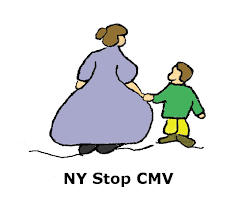


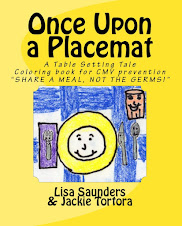

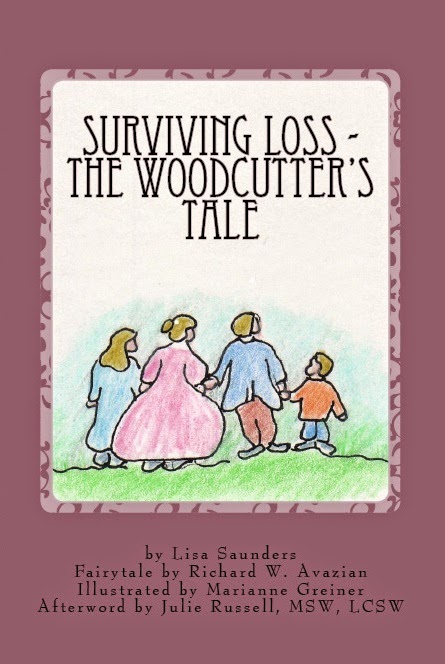

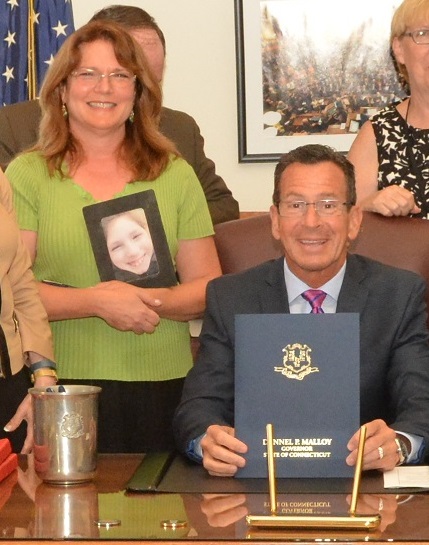
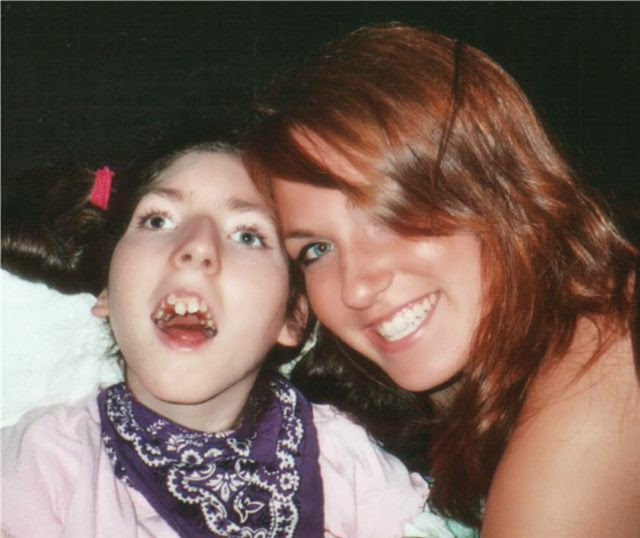
2 comments:
I was diagnosed with mononucleosis and found out I was pregnant at about he same time. This was almost 55 years ago. I gave birth at full term, however, she weighed only 4 lbs. 14 oz. They would not allow her to leave the hospital until she was 5 lbs. When she reached 5 lbs they told me that she was bleeding internally and that her stools were dark. They said she might need a transfusion. Her platelets were low as well as her blood count. She did require 3 transfusions. They then recommended she have exploratory surgery and found nothing wrong. The bleeding stopped and I now would be able to take her home. However, from all the crying she had a hiatal hernia. I did take her home. She then had diahrea and dehydrated very badly. She kept losing weight and I am almost lost her. Took her home again and she stated projectile vomiting and needed surgery which was caused by scar tissue from the first operation. Took her home and noticed she had poor motor skills. She was progressing very slowly. Didn't roll over, or babble, or hold her head, or walk until much later than most children. I first found out that she was deaf when she was 18 months old which was devastating. When I took her to speech therapy I asked if her hearing loss was from my mono and they said there are no statistics that indicate that. When she was about 2 years old she became very hyperactive and difficult to care for. To make matters far worse her father died at age 3. She was also diagnosed with microcephally. My granddaughter who is now 24 years old has normal hearing and decided to become a speech therapist. She told me that she thinks that I did not have mononucleosis but CMV. When she took her masters at Gallaudet someone came to her school and talked about CMV and that it can cause hearing loss. I just went online and found that many of the symptoms that my daughter had were very similar to the symptoms of CMV. I have never heard of CMV. I can't believe that for the past few years they have been speaking of the Zika Virus but never mentioned CMV. They said that Dr.'s have known about this for 60 years. I wanted to share my story with you.
thank you so much for sharing this!
Post a Comment